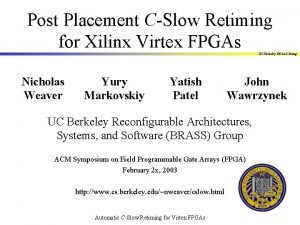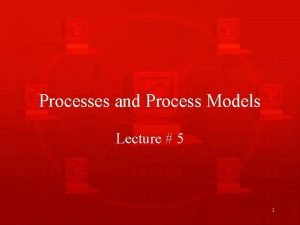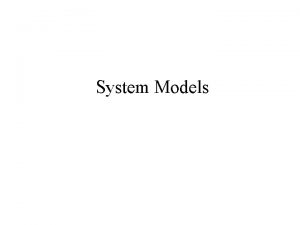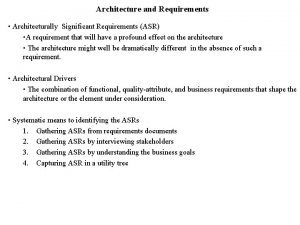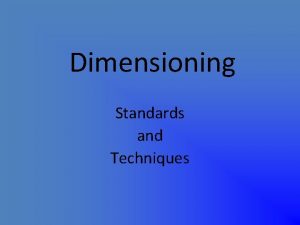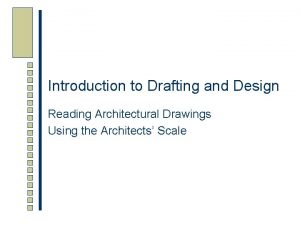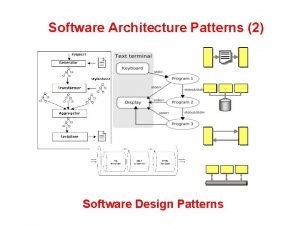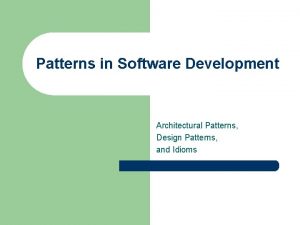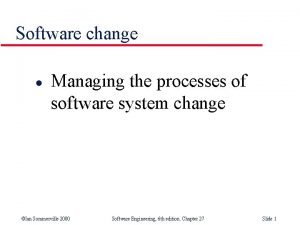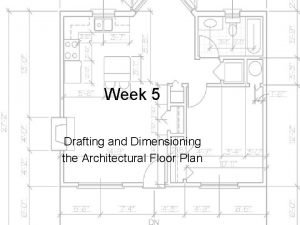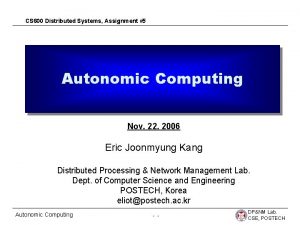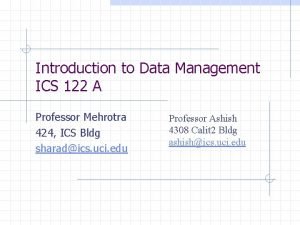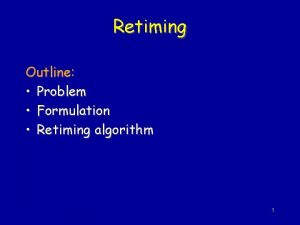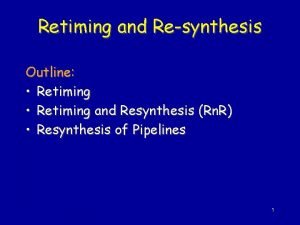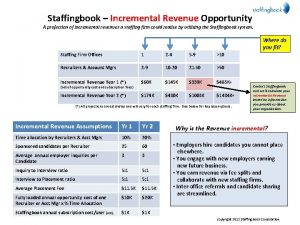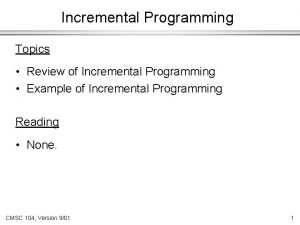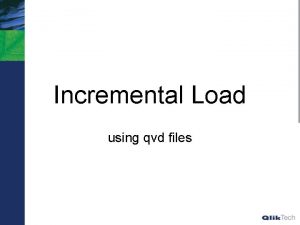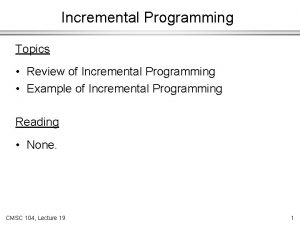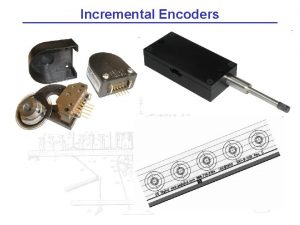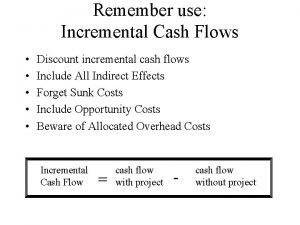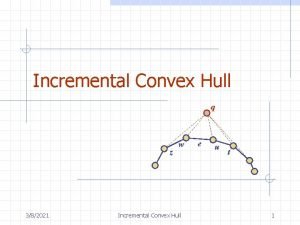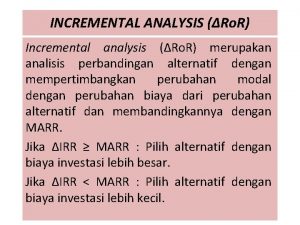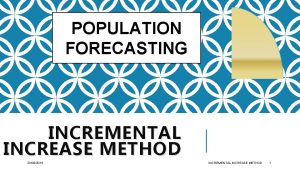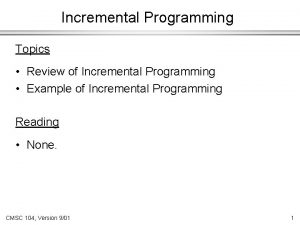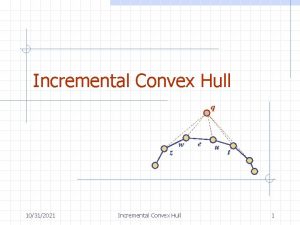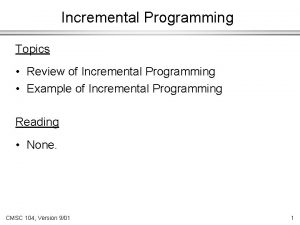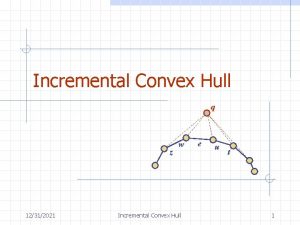Fine Grain Incremental Rescheduling Via Architectural Retiming Soha









































- Slides: 41

Fine Grain Incremental Rescheduling Via Architectural Retiming Soha Hassoun Tufts University Medford, MA Thanks to: Carl Ebeling University of Washington Seattle, WA

Example Write Address Read Address RAM Offset Problem -- Clock period is too large

Pipelining Write Address Read Address RAM Offset Problems w/ consecutive dependent operations

Performance Bottleneck n Latency constrained paths Latency = n

Performance Bottleneck n Latency constrained paths Latency = n n Approach apply architectural retiming at the RT level

Architectural Retiming Problem: too much work, too little time yk

Architectural Retiming Problem: too much work, too little time yk D pipeline register

Architectural Retiming Problem: too much work, too little time yk C N D negative register pipeline register

Architectural Retiming Problem: too much work, too little time yk C N D negative register precomputation prediction pipeline register

Outline n Precomputation l incremental rescheduling without resource constraints n Prediction l incremental rescheduling with resource constraints n Results

Precomputation Function yk Dt g x´i xi = C t+1 f C N D h

Precomputation Function yk Dt g x´i xi f C N = C t+1 = f (. . . , xi t+1 , . . . ) D h

Precomputation Function yk Dt g x´i xi f C N D = C t+1 = f (. . . , xi t+1 , . . . ) xi t+1 = x´i t = g (. . . , ykt , . . . ) h

Precomputation Function yk Dt g x´i xi f C N D h f´ = C t+1 = f (. . . , xi t+1 , . . . ) xi t+1 = x´i t = g (. . . , ykt , . . . ) Dt = f (. . . , g (. . . , ykt , . . . ) t = f´(. . . , yk , . . . )

Incremental Rescheduling yk g f Time n g Time n+1 f, h N h

Incremental Rescheduling yk g f h N f´ Time n g Time n f’ Time n+1 f, h Time n+1 h

Precomputing With Register Arrays Write Data Write Address Read Data

Precomputing With Register Arrays Write Data Write Address Read Address Out N F Read Data

Precomputing With Register Arrays Write Data Write Address Read Address F t = Out t+1 Out N F Read Data

Precomputing With Register Arrays Write Data Write Address Read Address F t = Out t+1 = Arrayt+1 [Read Addresst+1 ] Out N F Read Data

Synthesizing Bypass Paths Write Data Write Address Precomputed Read Address ? = Read Data

Precomputing RAM Output RAM N RAM

Prediction gi f C N D Z n What if ? l can’t precompute, l too many additional resources, or l performance is unsatisfactory

Prediction gi f C N D Z n What if ? l can’t precompute, l too many additional resources, or l performance is unsatisfactory n Predict C one cycle before its arrival

Schedule with Mispredictions R 1 C H C t c 1 t+1 c 2 H h 1 h 2 t-1 R 2

Schedule with Mispredictions R 1 C H C t c 1 t+1 c 2 H h 1 h 2 t-1 Negative Register Verify R 2

Schedule with Mispredictions R 1 C t-1 C H Negative Register Verify H t c 1 t+1 R 2

Schedule with Mispredictions R 1 C H C t c 1 t+1 c 2 H h 1 h 2 c 2* c 2 t-1 Negative Register Verify c 1*=? c 1 c 2*=? c 2 R 2

Synthesis Issues in Prediction n Negative register as predicting FSM l use signal transition probabilities l incorporate don’t care conditions n Nullifying mispredictions l Two correction strategies • As-Soon-As-Possible restoration • As-Late-As-Possible correction l Add handshaking signals to coordinate with interface

Related Work n Precomputation l Bypass Synthesis l lookahead [Kogge ‘ 81, …. . ] n Prediction / Speculative Execution l Most likely path, arbitrarily deep [Holtmann & Ernst ‘ 93, ’ 95] l Pre-execution [Radivojevic & Brewer ‘ 94] l Possible multiple paths & arbitrarily deep [Lakshminarayana et al. ‘ 98] n Percolation scheduling [Potasman et al. ‘ 90]

Results

Architectural Retiming n Improves throughput while preserving functionality and sometimes latency n Bridge gap between HLS and logic optimizations n Unifies several sequential optimizations l bypass synthesis l lookahead transformation l branch prediction l fine-grain cross register optimizations

Ph. D. Forum at DAC ‘ 99 n Goal l increase interaction between academia and industry n Format l students present work at poster session at DAC l researchers give feedback n Who’s eligible? l Students within 1 or 2 years of finishing Ph. D. thesis www. cs. washington. edu/homes/soha/forum

The End

Precomputing in Single-Register Cycles A B Original Circuit

Precomputing in Single-Register Cycles A N B Original Circuit

Precomputing in Single-Register Cycles A A' B' N A B B Lookahead -- A(n) is a function of B(n-2) [Kogge, ‘ 81], [Parhi & Messerschmidtt, ‘ 89]

Precomputing RAM Output RAM

Precomputing RAM Output RAM

Speculative Execution Scope and Depth c 1 c 3 c 2 c 4 c 6 c 5

Speculative Execution Scope and Depth
 Vivado retiming
Vivado retiming Retiming example
Retiming example Retiming example
Retiming example Refined grains
Refined grains Biodiversity and classification
Biodiversity and classification Coarse grain activity model
Coarse grain activity model Waterfall and shower strategy
Waterfall and shower strategy Yara kasalligi ppt
Yara kasalligi ppt Aria soha
Aria soha Umumiy kimyoviy texnologiya ma'ruza matni
Umumiy kimyoviy texnologiya ma'ruza matni Aria soha
Aria soha Via erudita e via popular
Via erudita e via popular Haz piramidal directo
Haz piramidal directo Decimoquinta estacion del via crucis
Decimoquinta estacion del via crucis Via negativa
Via negativa 12 estacion del via lucis
12 estacion del via lucis Building symbols graphics
Building symbols graphics A gambrel is what type of architectural feature?
A gambrel is what type of architectural feature? Roman empire achievements
Roman empire achievements Service ade 9500 systems
Service ade 9500 systems Beacon hill architectural commission
Beacon hill architectural commission Asr architecture
Asr architecture Dimensioning standards
Dimensioning standards Reading architectural drawings
Reading architectural drawings Architectural drawing layout
Architectural drawing layout Design patterns in architecture
Design patterns in architecture Flowchart for airline reservation system
Flowchart for airline reservation system Introduction to architectural drawing
Introduction to architectural drawing Perancangan arsitektur perangkat lunak
Perancangan arsitektur perangkat lunak Architectural style
Architectural style Architectural patterns in software engineering
Architectural patterns in software engineering Architectural innovation
Architectural innovation Architectural evolution
Architectural evolution Floor plans symbols
Floor plans symbols Layered pattern
Layered pattern Natural ventilation
Natural ventilation Load bearing wall symbol
Load bearing wall symbol An architectural blueprint for autonomic computing
An architectural blueprint for autonomic computing Database collection
Database collection Sliding door symbol
Sliding door symbol Common architectural scales
Common architectural scales Architectural metal coating
Architectural metal coating
